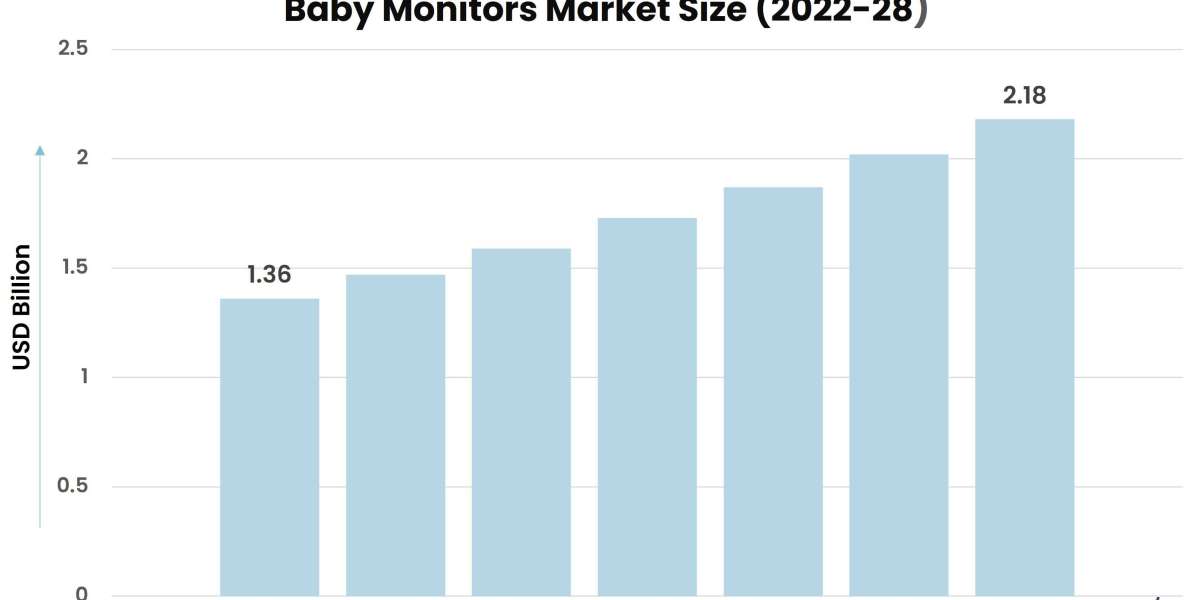The baby monitors market is experiencing significant growth, driven by technological advancements and evolving consumer preferences. As parents increasingly seek to ensure their children’s safety and well-being, the demand for more sophisticated monitoring solutions continues to rise. This article explores the key drivers fueling the expansion of the baby monitors market.
According to Stratview Research, the baby monitors market was estimated at USD 1.36 billion in 2022 and is likely to grow at a CAGR of 8.25% during 2023-2028 to reach USD 2.18 billion in 2028.
- Increasing Parental Awareness and Safety Concerns
One of the primary drivers of the baby monitors market is the growing awareness among parents about the importance of child safety. Modern parents are more vigilant and proactive about monitoring their children, especially infants, due to concerns about Sudden Infant Death Syndrome (SIDS), sleep apnea, and other health issues. Baby monitors provide real-time audio and visual feedback, allowing parents to keep a close watch on their babies even from a distance, offering peace of mind and enhancing child safety.
- Technological Advancements in Baby Monitoring Devices
Rapid technological advancements have transformed the baby monitor industry, introducing smart features such as high-definition video, two-way communication, temperature sensors, and heart rate monitoring. Innovations like Wi-Fi connectivity, smartphone integration, and AI-powered sleep analysis have made baby monitors more sophisticated, catering to tech-savvy parents. These advancements are driving market growth by making monitors more appealing, user-friendly, and accessible.
- Growing Demand for Smart and Wireless Baby Monitors
The shift towards smart homes and the increasing penetration of IoT (Internet of Things) devices are contributing significantly to the growth of the baby monitors market. Wireless and smart baby monitors that connect seamlessly with smartphones and home automation systems are becoming popular due to their convenience and advanced functionalities. Parents can now monitor their babies from anywhere in the house or even remotely, enhancing flexibility and control.
- Rising Disposable Income and Urbanization
As disposable incomes rise, especially in urban areas, parents are willing to invest in advanced baby care products, including high-end baby monitors. Urbanization has also led to an increase in nuclear families, where the need for monitoring infants without constant physical presence is more pronounced. This trend has boosted the adoption of baby monitors, particularly among working parents who need to balance childcare with other responsibilities.
- Increasing Birth Rates in Emerging Economies
Emerging economies, particularly in Asia-Pacific, are witnessing a rise in birth rates and improving living standards, which are propelling the demand for baby monitors. As awareness of child safety grows in these regions, the market is expected to expand further, offering lucrative opportunities for manufacturers and retailers.
Conclusion
The expansion of the baby monitors market is driven by a combination of factors, including heightened safety awareness, technological advancements, increased disposable incomes, and rising birth rates in emerging markets. As the market continues to evolve, it is poised to offer more innovative solutions that cater to the growing needs of modern parents, ensuring the safety and well-being of their children.














